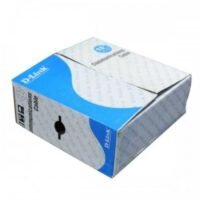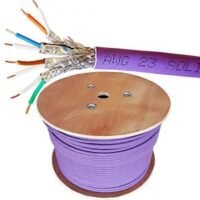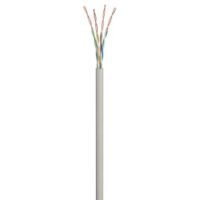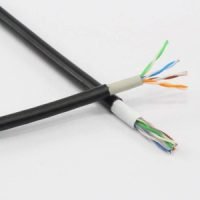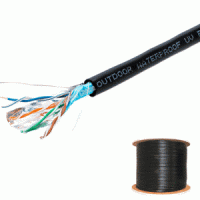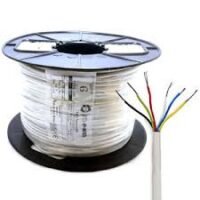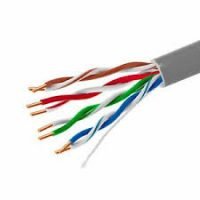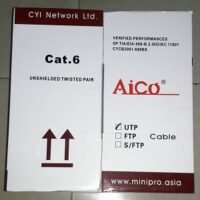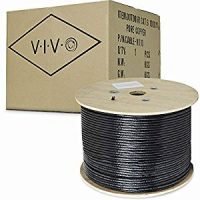Ethernet Cables, Networking Equipments Blog
Ethernet-LAN- Network Cables shop in Kenya
Ethernet-LAN- Network cable for Computer Networks and structured cabling.
TDK Ethernet cable shop is based in Nairobi Kenya, We ICT, Networking and Security Experts in Kenya. We are dealers a wide range of cables for different applications such as Underground Telephone Cables, Fiber Cables, CCTV RG59 Cables, and Computer Networking Cables and Our LAN Cables include; Cat6 Cables brands.
We stock, Indoor and Outdoor Ethernet Cables ranging from Cat5e Cables, Cat6a and category 6e and Cat7a Network Cable. We also stock patch cords for structured cabling. Our patch cords range from cat5e to cat6a.
Ethernet/Lan cables classifications and Specifications
Ethernet-LAN-cables
Ethernet-LAN-cables
Ethernet-LAN-cables
Ethernet-LAN-cables
Ethernet-LAN-cables
Ethernet-LAN-cables
Ethernet-LAN-cables
Ethernet-LAN-cables
Ethernet-LAN-cables
Ethernet-LAN-cables
Ethernet-LAN-cables
Ethernet-LAN-cables
Ethernet-LAN-cables
Ethernet-LAN-cables
Ethernet-LAN-cables
Ethernet-LAN-cables
Ethernet-LAN-cables
Ethernet-LAN-cables
Ethernet-LAN-cables
Ethernet-LAN-cables
Ethernet-LAN-cables
Ethernet-LAN-cables
Ethernet-LAN-cables
Ethernet-LAN-cables
Ethernet-LAN-cables
Ethernet-LAN-cables
Ethernet-LAN-cables
Ethernet-LAN-cables
ACP Outdoor Cable Ethernet Double shielded 305 Meters (Black)
We offer a wide selection of Ethernet Cables. Cat-5e, 6e, 6a, 7a from top brands. They use twisted-pair cables and modular connectors and are designed to run at 10 Mbps, 100 Mbps, or 1 Gbps
There are several different varieties of Ethernet cable that can be obtained: speed variations, crossover cables, Cat 5e, Cat6, Cat6a, Cat7, etc.
Ethernet cables are manufactured according to different standards and grouped into different categories normally abbreviated as a cat. The main type of cables that you can find in the Kenyan market is
Category 5e Network Cables; HST, Easenet, Aico, ACP, G-LINK, Office Point
Category 6e Cables; Dahua, D-Link, Easenet, Giganet, Siemon, ACP, Hikvision
Cat Cat6a, Giganet and Siemon and UBNT
Cat7 etc Siemon
As the category number gets higher, so does the speed and Mhz of the LAN Cable as shown in the chart below. This is not a coincidence, because each category brings more stringent testing for eliminating crosstalk (XT) and adding isolation between the wires.
Difference between category5e and category6 cables
The main type of Computer Networking Ethernet cables that are used in Kenya are category 6 cables and category 5e Cables
If you need 1gigabit Speeds, You can use Cat-5E cable for 1Gb speeds. Category 6 was revised with Augmented Category 6 (Cat-6a) which provided testing for 500 Mhz communication (compared to Cat-6E 250 Mhz). The higher communication frequency eliminated alien crosstalk (AXT) which allows for longer range at 10 Gb/s.
Physical Differences of the Category 5e and Cat 6 Cables
Data transfer using cables brings interference, the physical standards in the cable construction helps in the elimination of interference and allow for faster speeds.
The wire twisting and isolation cable twisting was invented by Alexander Graham Bell in 1881 for use on telephone wires that were run alongside power lines. He discovered that by twisting the cable every 3-4 utility poles, it reduced the interference and increased the range. Twisted pair became the basis for all Ethernet cables to eliminate interference between internal wires (XT), and external wires (AXT).
There are two main physical differences between Cat-5 and Cat-6 cables, the number of twists per cm in the wire, and sheath thickness.
Check out related posts
Shielded (STP) vs. Unshielded (UTP)
Because all Ethernet cables are twisted, manufactures use shielding to further protect the cable from interference. Unshielded twisted pair cat 5e and cat6e cables can easily be used for cables between your computer and the wall, but you will want to use shielded cable for areas with high interference and running cables outdoors or inside walls. Where other cables run
What is the difference of Cat 5, Cat 5e, Cat 6, Cat 6a, Cat 7
CAT5E vs CAT6 vs CAT6A Network Cable Speed Test
Speeds differences and applications of network cables CAT5, CAT5E, CAT6, CAT6A, CAT7
Category 5e Ethernet Cables
Cat-5e: This form of network cable is recognized by the TIA/EIA and is specified as TIA/EIA-568
The Ethernet cable has a slightly higher frequency specification that Cat-5 cable as the performance extends up to 125 Mbps.
The Cat5e cable can be used for 100Base-T and 1000Base-t (Gigabit Ethernet).
NOTE: 100-250 MHz/1Gbps/100m.
Category 6e Ethernet Cables
Cat-6e; This cable is specified as TIA/EIA-568-B provides a significant improvement in performance over Cat 5e. Cat 6 cables are more tightly wound than Cat 5e and they often have an outer foil or braided shielding. The shielding protects the twisted pairs of wires inside the Cat 6-ethernet cable, helping to prevent crosstalk and noise interference. Cat-6 cables can technically support speeds up to 10 Gbps, but can only do so for up to 55 meters.
NOTE: 250-500Mhz/10 Gbps /100m.
Category 6a Network Lan Cables ;
Cat-6a: Siemon Cat6a and Giganet Cat6a The “a” in Cat 6a stands for “Augmented” and the standard was revised in 2008. The Cat 6a cables are able to support twice the maximum bandwidth and are capable of maintaining higher transmission speeds over longer cable lengths. Cat 6a ethernet cables utilize shielded which is sufficient to all but eliminate crosstalk. However, this makes them less flexible than Cat 6 cable.
NOTE: 250-500Mhz/10 Gbps /100m.
Category 7 Local Area Networks
Cat-7: This is an informal number for ISO/IEC 11801 Class F cabling. Cat7 Ethernet cable comprises four individually shielded pairs inside an overall shield. Cat7 cable is aimed at applications where transmission of frequencies up to 600 Mbps is required.
Note: 600Mhz/10Gbps/100m (40Gbps at 50m/100Gbps at 15m).
Types of Shielded Ethernet Cables
- F/UTP– Foiled/Unshielded Twisted Pair; Common in Fast Ethernet deployments, this cable will have a foil shield that wraps around unshielded twisted pairs.
- S/UTP– Braided Shielding/ Unshielded Twisted Pair; this cable will wrap a braided shield around unshielded twisted pairs.
- SF/UTP– Braided Shielding Foil/Unshielded Twisted Pairs; This cable braids a shield around a foil wrap to enclose unshielded twisted pairs.
- S/FTP– Braided Shielding/Foiled Twisted Pair; this cable wraps a braided shield around all four copper pairs. Additionally, each twisted pair is enveloped in foil.
- F/FTP-Foiled/Foiled Twisted Pair; this cable encloses all copper pairs in foil. Additionally, each twisted pair is enveloped in foil.
- U/FTP-Unshielded/Foiled Twisted Pairs; this cable only envelopes the twisted pairs in foil.
- U/UTP-Unshielded/Unshielded Twisted Pair; No sheathing is used. Standard Cat5e cable is an example of U/UTP cables.
There are different ways to shield an Ethernet cable, but typically it involves putting a shield around each pair of wire in the cable. This protects the pairs from crosstalk internally.
Manufacturers can further protect cables from alien crosstalk but screening UTP or STP cables. Technically the picture above shows a Screened STP cable (S/STP).
Insulation difference
Outer insulation is typically polyvinyl chloride (PVC) or low smoke zero halogens (LSOH)
| Example materials used as insulation in the cable | |
| Acronym | Material |
| PE | Polyethylene |
| FP | Foamed polyethylene |
| FEP | Fluorinated ethylene propylene |
| FFEP | Foamed fluorinated ethylene propylene |
| AD/PE | Air dielectric/polyethylene |
| LSZH or LS0H | Low smoke, zero halogen |
| LSFZH or LSF0H | Low smoke and fume, zero halogen |
Ethernet cable pinout
Although the wiring and the cable manufacture details may vary between the different cable categories, the basic connectivity remains the same. In this way Ethernet cables can be used reliably to make connections between items of equipment, etc.
A summary of the signals carried and the relevant wires and connections is given in the table below:
| RJ-45 / CAT 5 / CAT 5E PINOUT & WIRING | ||||||
| PIN NO | TELEPHONE | 10BASE-T | 100BASE-T | 1000BASE-T | POE MODE A |
POE MODE B |
| 1 | +TX | +TD | +BI_DA | 48 V out | ||
| 2 | -TX | -TX | -BI_DA | 48 V out | ||
| 3 | +RX | +RX | +BI_DB | 48 V return | ||
| 4 | Ring | +BI_DC | 48 V out | |||
| 5 | Tip | -BI_DC | 48 V out | |||
| 6 | -RX | -RX | -BI_DB | 48 V return | ||
| 7 | +BI_DD | 48 V return | ||||
| 8 | -BI_DD | 48 V return | ||||
Ethernet cable maximum lengths
A summary of Ethernet cables and their maximum operating lengths is given below:
| ETHERNET CABLE MAXIMUM LENGTHS | ||
| SPECIFICATION | CABLE TYPE | MAXIMUM LENGTH |
| 10BaseT | Unshielded Twisted Pair | 100 meters |
| 10Base2 | Thin coaxial cable | 180 meters |
| 10Base5 | Thick coaxial cable | 500 meters |
| 10BaseF | Fiber optic cable | 2000 meters |
| 100BaseT | Unshielded twisted pair | 100 meters |
| 100BaseTX | Unshielded twisted pair | 220 meters |
Related posts on networking and Structured cabling
- Cat 6a RJ 45 Plastic Connectors
- 8 Port Patch Panels CAT 5e/6a.
- USB Extension Cables 1.5M| 3M| 5M| 10M
- Cisco 24 Port Switch WS-C3560x-24P-L
- Cisco 2911/K9 Integrated Wired Router
- Cat 6 Outdoor Cable UV Shielded & Weatherproof
- Ethernet Cables Prices in Kenya | Cat 5e, Cat6 Cat7
- Dahua UTP CAT6 Full Copper Cable 305M
- Ethernet Cables For structured Cabling and Networking. Data &



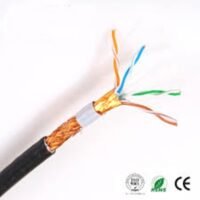

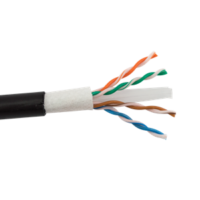
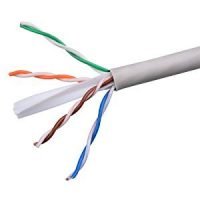


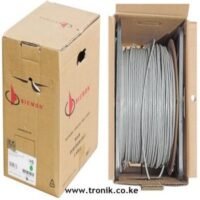


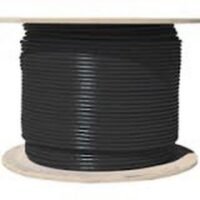


![Dahua UTP CAT6 Full Copper Cable 305M kenya]](https://www.tronik.co.ke/wp-content/uploads/2019/01/Dahua-UTP-CAT6-Full-Copper-Cable-305M-kenya-200x200.jpg)




